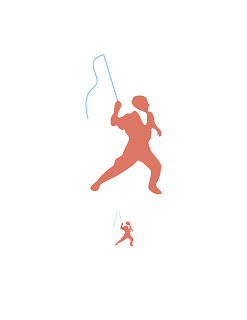Thursday, March 31, 2011
Lupton on Diagrams and The Numbers Man
After reading these two articles I noticed the examples given were not only highly complex but they were also extremely smooth in how they were read. In these readings I saw a correlation with the current information graphics assignment. The data collected dictated the form of the graphic. This is probably why the graphics were easy to read since their layout seemed so natural. Forcing graphics into a layout or form that doesn't suit it could cause confusion on the part of the viewer.
Monday, March 28, 2011
Information Graphic Find & Share
I chose this information graphic to share because it combines its factual information with the road image to become a functional time line. It also adds more detailed information about why this occurs with the funnel graphics. This added detail takes the graphic from being super simple to looking more filled and complete. Without this the road graphic would look too simple and possibly wouldn't be strong enough to stand on its own.
Wednesday, March 23, 2011
Monday, March 21, 2011
Circus Information
Temporal:
• 1768 - Philip Astley offers horsemanship displays in a ring, with variety acts
1825 - first record of a Big Top in use
• 1815 - Elephants and menageries added as sideshow attractions
1831 - wild animals actually perform in the show
• Ringling circus starts in 1884
Merged with Barnum & Bailey circus in 1919 to become "Ringling Brothers and Barnum & Bailey Combined Shows"
Spatial:
• First circuses started in London, England. Ringling Bros. started in Baraboo, Wisconsin
• most flying trapeze acts are performed between 20 and 40 feet above the ground.
• Typical oval-style circus tents come in a size of 118 by 150 feet, though some can reach sizes of 500 feet
Quantitative:
• 18 % of the population visited a circus, street festival or carnival in 2000
• Ringling has a single elephant incident: the death of a trainer at the company's elephant farm. Wild elephants kill 50-225 people annually in Africa
• Ringling tickets today range from 27 to 298 dollars. In 1895 a ticket for a show in Wichita Kansas ran 50 cents for adults. Children 12 and under were half off.
Sources:
http://www.naiaonline.org/about/animalactivists.htm
http://www.circusarts.org.uk/about-circus/index.php
http://www.ticketsnow.com/ringling-bros-bb-circus-tickets/?gcid=S16598x073-thpz_ring&keyword=ringling%20tickets
http://www.flickr.com/photos/historian77/3049859110/
http://www.elephantcare.org/humanele.htm
http://www.jugglenow.com/circus-history.html
Friday, March 11, 2011
Thursday, March 10, 2011
In-class Typographic exercises
Using different methods of hierarchy we had to explore through exercises by changing only certain parameters.
 |
| Leading |
 |
| Indent |
 |
| Weight/Style |
 |
| Scale |
 |
| Orientation |
 |
| Freestyle |
Tuesday, March 8, 2011
Final color icons
Through this project I have been showing my circus culture in a clean and sophisticated fashion. I am portraying the reality of life in the circus and not the garish, cartoonish design that it is usually seen while visiting the circus as a spectator.
To keep my icons legible I simplified them down to what was needed while keeping certain markers that would clue the viewer into the subject matter. My color choice and placement of color was also used to highlight the important markers in my icons.
Cohesion was kept through my set by setting up rules that I used throughout my icons. All of the icons have an area where the negative space flows into the positive space and adds more detail into the icon itself. Keeping a consistent weight was important so I chose to have all icons be vertical. Directionally I kept all icons facing the right.
2 Color Icon Set:
Single Color Icons:
Progression of the trapeze icon:
Subscribe to:
Comments (Atom)












































